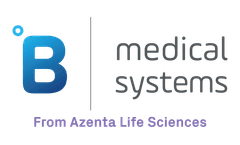Tumor And Tissue Articles & Analysis
31 articles found
Watertown, MA – March 24, 2025 – Biopharma PEG, a leading supplier of high-quality polyethylene glycol (PEG) derivatives, highlights its innovative product DSPE-PEG-Mannose, an advanced biomedical polymer with significant potential in drug delivery, tumor-targeted therapy, tissue recognition, and adhesion.Structural Advantages of DSPE-PEG-MannoseDSPE-PEG-Mannose ...
PDX models involve implanting human tumor tissues into immunocompromised mice, allowing researchers to study tumor growth and response to treatment in a living organism. These models retain the genetic and phenotypic characteristics of the original human tumors, providing insights into how different therapies may perform in ...
Colorectal cancer cell lines are cultured cells derived from tumor tissues of patients diagnosed with colorectal cancer. These cell lines possess characteristics that allow them to grow indefinitely in controlled laboratory environments. Researchers use these models because they retain many of the biological properties of the original tumors, ...
The platelet membranes are already bionic coatings that allow nanoparticles to bypass macrophage detection, catch on-target tumour cells and target inflammation sites, studies show recently. Tumor Cell Membrane in Bionic Nanomedicine Tumor cell membrane is produced after normal cells mutate. Recent studies have shown that tumor cells are ideal ...
Discover how matched tumor-normal sequencing can help clinical researchers detect the somatic origin of variants with certainty. In the era of precision oncology, it has become increasingly common for patients diagnosed with cancer to undergo tumor sequencing. Identifying the mutations that make up a tumor’s genomic landscape can help guide selection of targeted therapies and inform ...
Targeted Drug Delivery Targeted drug delivery systems aim to deliver drugs specifically to diseased cells or tissues while minimizing exposure to healthy cells. PEG derivatives play a crucial role in developing such systems, particularly in oncology. For instance, PEGylated liposomes and nanoparticles can be engineered to carry anticancer drugs directly to tumor ...
ESMO updated its recommendations for NGS in advanced cancers this year, urging broader use of NGS in additional cancer types and the inclusion of tumor-agnostic biomarkers. The ESMO Precision Medicine Working Group (PMWG) first published its recommendations for when to use next-generation sequencing (NGS) in routine practice for patients with metastatic cancers in 20201. At that time, based ...
Nanogels have received widespread attention in recent years due to their unique properties and potential applications in various fields such as drug delivery, tissue engineering, and diagnostics.Classification of NanogelsAccording to the phase change triggering mechanism of nanogels, nanogels can be divided into ordinary nanogels and environment-responsive nanogels. ...
CDH1 is a cell adhesion molecule that is primarily expressed in epithelial tissues. Its main function is to maintain the integrity and stability of cell-cell adhesion. CDH1 accomplishes this by forming adherens junctions, which are essential for the structural organization of tissues and organs. These junctions enable cells to adhere to each other, ensuring ...
Because nanobodies are smaller in size and have stronger tumor tissue penetration capabilities, researchers are currently applying them to ADC drugs for the treatment of solid tumors, hoping to improve the solid tumor tissue penetration effects of current ADC drugs.Nanobody StructureGenerally, the relative ...
Due to its smaller relative molecular weight, non-IgG-like BsAb has higher penetration into tumor tissue and therefore has a stronger therapeutic effect. These BsAbs come in many forms, mainly including TandAb (tandem diabody), scFv-HSA-scFv, BiTE (bispecific T-cell engager), DART (dual affinity retargeting) and Nanobody. ...
In particular, linker design plays a key role in regulating ADC stability in systemic circulation and payload release efficiency in tumors, thereby affecting ADC pharmacokinetics (PK), efficacy, and toxicity profiles. ...
Therefore, the application range of ADCs containing non-cleavable linkers is limited, and they are mainly used for the treatment of hematological cancers or tumors with high antigen expression.Compared with non-cleavable linkers, cleavable linkers use specific conditions to release drugs at target cells. ...
Tumors and Blood Vessel Growth Tumor, as an abnormal mass of cells, has blood vessels of various sizes that can be seen everywhere on the surface and deep within it. ...
Targets can be divided into tumor-specific antigens (TSA) and tumor-associated antigens (TAA) according to their expression. Antigens that are only expressed in tumor cells but not in normal cells are tumor-specific antigens and the most ideal targets; antigens that are lowly expressed in normal tissues but ...
Breast cancer is the malignant tumor with the highest morbidity and mortality among women worldwide. ...
Its biological function has not yet been clarified, but due to its limited distribution in normal tissues and high expression in some tumor tissues, it is expected to be used in tumor-specific treatment. ...
LFQ is frequently used to search tumor biomarkers in clinical studies, as tumor adjacent or normal tissues are often treated as control group. de Oliveira et al. found that MMP-7 was presented as a more promising biomarker associated with useful assays of clinical practice for gastric adenocarcinoma patient diagnosis via LFQ results. ...
Similarly, liposomal DDS facilitates intracellular drug delivery, especially in epithelial cells, alveolar macrophages, and tumor cells. This DDS also prevents topical stimulation of lung tissue and reduces drug toxicity. ...
The use of tumour markers to diagnose, assess prognosis, and select a suitable cancer treatment has become possible due to the development of inexpensive and user-friendly molecular analysis tools such as the polymerase chain reaction (PCR). Maintaining the integrity of biomarkers during their processing and storage is therefore of critical importance to accurately diagnose and give prognosis ...












